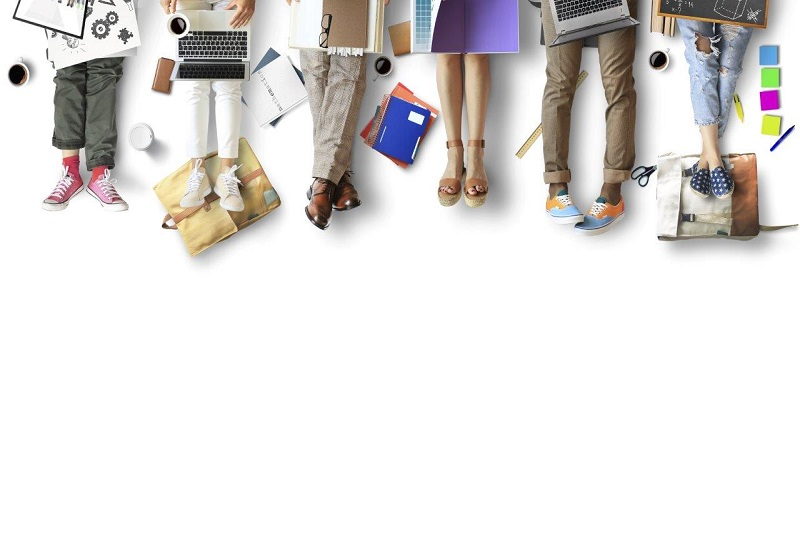ATD Blog
Use Weirdness to Create Better Learning Experiences
Tue Jun 29 2021

There’s no doubt the pandemic has prompted a new way of thinking about how to create adaptable learners in your organization. It’s likely also provided you an opportunity to determine how to meet the needs of people and become more human in your training and development. The past year has had its share of weirdness, for sure, but has your organization adapted?
Most of our talent development efforts have probably tried to maintain a sense of normal despite the chaos and change of the last year. Grasping for a sense of calm within the storm has probably felt strange—but what if we lean in to the weirdness? What if instead of trying to serve the same types and styles of learning, we embrace that discomfort and take the risk of capitalizing on the human discomfort of growth through tumult? What if weirdness works to help people grow through change?
In various psychological and neuroscience research, weirdness is also referred to as “novelty” or something new and different. The current understanding around memory is that when we experience something novel in a familiar context, we will more easily store this event in our memory. Our memory center (the hippocampus) becomes activated with a novel stimulus more than a familiar stimulus. Even better, the emotional processing in our amygdala also impacts this memory formation, particularly if a strong emotion around said novelty exists.
In fact, our brains process a lot of sensory information daily. The hippocampus compares incoming sensory info with stored knowledge. If the two differ, the hippocampus sends a pulse of dopamine to the substantia nigra and ventral tegmental area in the midbrain. From there, nerve fibers extend back to the hippocampus and trigger the release of more dopamine. It’s called the hippocampal-SN/VTA loop. This dopamine release in a weird experience also makes us more motivated to discover, process, and store these sensory impressions longer-term.
So how does weird become a meaningful and long-term part of talent development? Here are a few useful steps toward implementing weirdness into development experiences:
Seek Out and Foster More Weird Experiences
This year has taught us that we have had to approach development in new and novel ways in order to be effective. From retooling in-person leadership development programs that have served as hallmarks in our organizations to quickly spooling up courses in how to work remotely, we’ve had to innovate and create faster than we’ve ever had to do in the past. It’s been hard, but it’s also led to new ways of thinking about how we learn, and that’s worth continuing. It’s about embracing the fact that the old rules of how we develop talent may no longer serve us.
So how do you continue to innovate in talent development? As someone who creates content, one way is to seek out more weird experiences or different situations. Maybe that looks like taking a field trip, either virtually or in person, to an art museum to check out the contemporary art section. It may be listening to music outside of your preferred genre, attending an open mic night, or reading books and articles that are not your usual reads. Perhaps it’s engaging in a new sport or hobby unusual to you. Those are all ways to start to incorporate ideas into your content and programming.
Encouraging this discovery among your team could give them fuel for creating more unique and memorable experiences for others. The process of feeling the weirdness of novelty can fuel your creativity, and you’ll be able to create and innovate from a place of more genuine weirdness.
Embracing the Weird World We’re In
Training development that acknowledges the elephant in the room about humanity—that sometimes we do weird stuff and we’re not sure how to approach it—inspires the cognitive disinhibition necessary for training managers to stop hitting the brakes so hard when a crazy idea surfaces and is considered “too weird.” When it’s OK to be weird, your brain stops filtering as much and allows more freedom to explore ideas and solutions, thereby fostering more creative insights and aha moments in their learners.
Embracing your weirdness feels more authentic, relaxed, and playful. That’s a great space to be in to be more open for learning. Something else happens when we let down our guard in this authenticity: We tackle bigger and more uncomfortable challenges and the learning becomes a bit uncomfortable, which is a great signal that learning is working. Getting weird means letting people reveal their idiosyncrasies and passions and their humanity. It creates an intimacy and connection in learning, which fosters better memory and application. It also gives us deep perspective on the weird times we live in, allowing us the chance to be OK in the tough times we’ve lived through.
Want to learn more? Join me during the ATD 2021 International Conference & Exposition for the session Why Weirdness Works: Using Novelty to Create Better Learning Experiences in Leadership Development.
You've Reached ATD Member-only Content
Become an ATD member to continue
Already a member?Sign In
